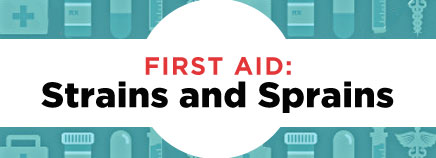Splinters are objects that become embedded under the skin. Most often these are tiny pieces of wood, although glass, metal, and plastic can be splinters too. Taking a splinter out as soon as you spot it helps prevent infection and makes removal easier (since the skin won’t have time to heal …
First Aid: Stiff Neck
A stiff neck without other symptoms might be caused by minor muscle strain from sleeping in an odd position or sitting in front of a computer too long. But other signs may accompany neck stiffness, making it a more serious complaint. For instance, meningitis is a rare infectious illness that …
First Aid: Stomachaches
Stomachaches can be caused by many things, from gas or constipation to stress, overeating, or a contagious stomach bug. Sometimes, complaints about stomach pain may have nothing to do with the stomach itself — pain can come from another part of the body. Signs and Symptoms vomiting nausea diarrhea constipation …
First Aid: Strains and Sprains
Strains are injuries to muscle due to overstretching, while sprains involve a stretch or a partial tear of ligaments (which connect two bones) or tendons (which connect muscle to bone). Sprains and strains happen more often in teens than in younger children. Signs and Symptoms pain in the joint or …
First Aid: Sunburn
Sunburn can happen within 15 minutes of being in the sun, but the redness and discomfort may not be noticed for a few hours. Repeated sunburns can lead to skin cancer. Unprotected sun exposure is even more dangerous for kids who have many moles or freckles, very fair skin and …
First Aid: Teeth Injuries
If your child prematurely loses a baby tooth, there’s no need to try to replace it. But if a permanent tooth is dislodged, it’s a dental emergency. Permanent teeth have the best chance of survival if replaced within 15 minutes. So it’s important to act quickly and follow the guidelines below. Many …
First Aid: The Flu
Sometimes mistaken for the common cold, the flu (influenza) causes more symptoms and can sometimes cause serious illness. Fortunately, most kids who get the flu get over the infection without any problems. The flu occurs most often in the winter months. Signs and Symptoms fever chills headache muscle aches loss …
First Aid: Tick Bites
While most tick bites are harmless and don’t require medical treatment, some ticks (like the deer tick, wood tick, and others) can carry harmful germs and cause diseases like Rocky Mountain spotted fever and Lyme disease. The deer tick is tiny, no larger than a pencil point. Other ticks are …
First Aid: Urination Pain
Pain during urination can be caused by infection in the urinary system; irritation or injury of the genital area; or stones (small masses of minerals) in the urinary tract. Urinary tract infections (UTIs) are the most common cause of painful urination. Signs and Symptoms burning or stinging with urination the …
First Aid: Vomiting
Vomiting can be caused by many things, most commonly gastroenteritis (the “stomach flu”). Vomiting can cause kids to lose fluids, salts, and minerals, so it’s important to make sure these are replaced. What to Do 1. Do not feed milk products or solid foods to a child who has been vomiting. 2. …










